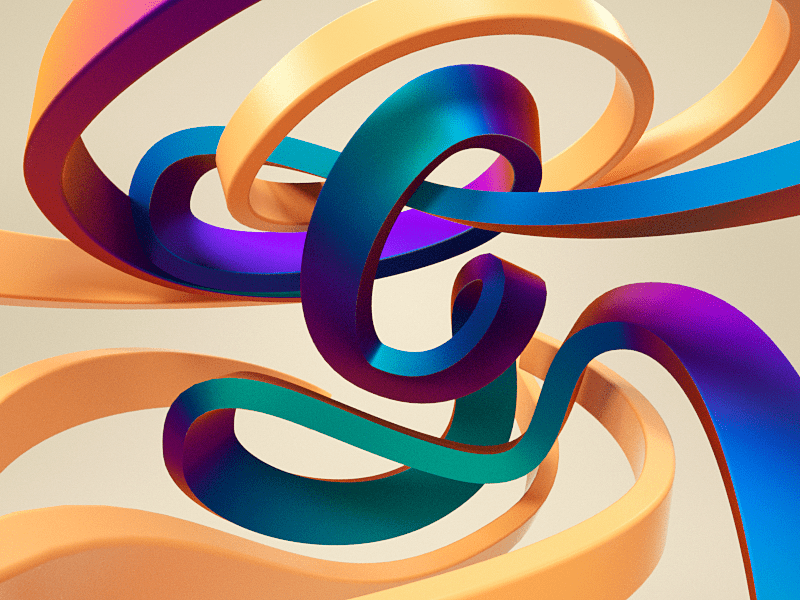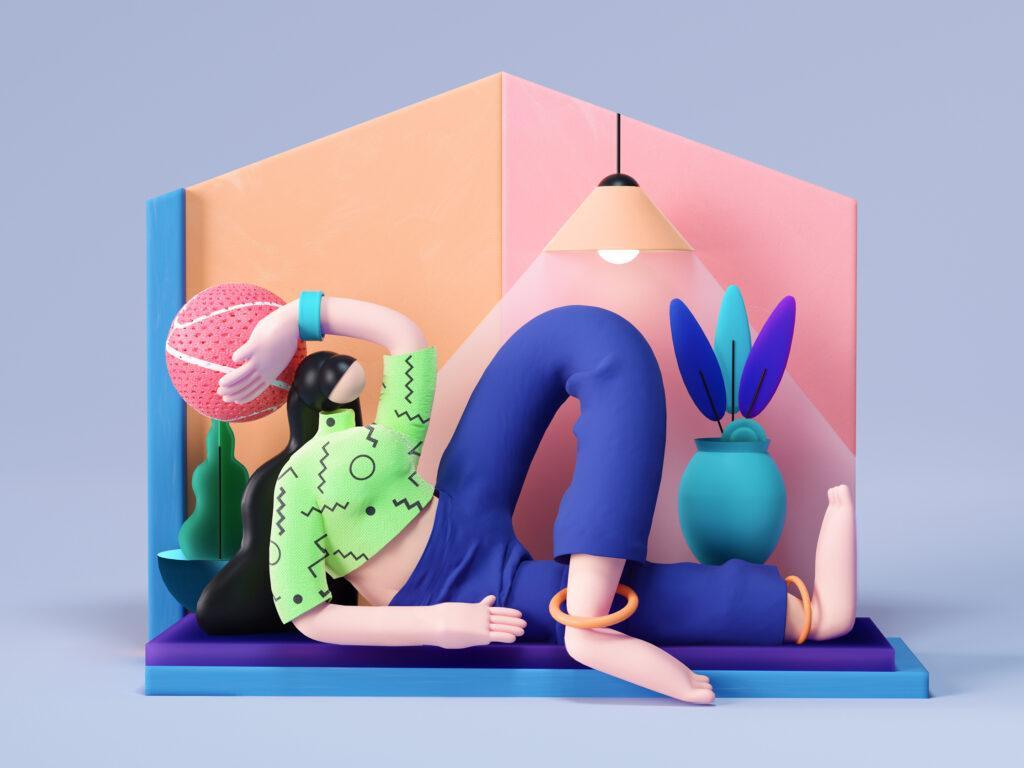Gingersauce is a pro tool for creating brand books. Our mission is to educate on the importance of visual presentation and company branding. In line with it, we have decided to start a series of interviews with talented designers we personally follow, to see what their thoughts are on the topic: what tips and tricks they can share, what lifehacks they learned pursuing a career in design, what they would change if they could go back in time.
Are you a designer and have something to share? Hit us up at [email protected] and maybe you’ll be a hero of the next interview 🙂
‘Every time I get on working, I feel like being on an adventure and it is exactly what I want to do every day.’
Design is not only beautiful visuals but something that can make a real impact on people experiencing it. Today we’re handing Gingersauce’s mic to Akira, a designer who strives to deliver meaningful experiences and communicate valid messages to viewers.
Akira is a 24 years old designer, who passionately believes that self-teaching is the best method of learning. This way you can concentrate on things you’re most interested in, perfecting your skill to the utmost.
During the last 3 years, Akira has mastered the art of Branding, Graphic Design, Illustration, UI, and Visual Design. Typography is another Akira’s passion, which he taught himself, now delivering visuals of different styles – from colorful and dynamic, to sophisticated and smooth lettering.


Before stepping on this career path, Akira had a point of contact with design through learning marketing back at university – which gave him a good understanding of what’s the industry like.
How did you become a designer and why?
I love to watch TV commercials, advertisements. I get goosebumps every time I see a good Ad. I just want to be a person who can also do something like that. So that is why I became one of those dreamers in pursuit of mastery in this industry.
So, what are your favorite inspiring commercials?
My top commercial is Nike: Unlimited You, Dove Real Beauty, Ikea-Lamp, Apple Don’t Blink (every Apple commercial is at top level to me to be honest, I’m not a fanboy but they definitely know something about being exaggerated in an artistic way). These are the most come to mind when I have to recall.

Though it is true the design can be a rather meticulous and stressful job – it’s all worth it in the end.
What do you like the most about being a designer?
I like the feeling of striking the eureka moment; receiving appreciation for what I work so hard to make. Also, the moment is just like this: having people to hear what inspires me to do what I do. The process is tedious and stressful but the result sure is nice.

Every professional has a set of tools that proved them to be the best, over the years of picks and tests. For a beginner, it can be confusing as there are so many options to choose from. Having an expert share their go-to software is a piece of luck!
What are the 3 tools that you’re always using in design?
My favorite picks are Cinema4D, Marvelous Designer, and Photoshop. There are also After Effects when I need to do composition tasks or something related to Motion Graphic, Kinetic Typography.

One of the most common issues when presenting your design to clients is not making sure you’re on the same page during the process.
How do you think the presentation of visuals influences the communication with a client and their attitude to design results?
For me, presenting your work puts clients on common ground, where they process the information through each stage of the design creation. By this, the meaning and the beauty of the visuals grow much stronger, to the point that it’s believed there’s no way it could be better. The product is great, but the package, other things around will make it even greater. That is how presentations of visuals mean to me.

We believe that the main secret of presenting visuals is to dive deep into the idea and do your best to express it through your work.
How do you personally present visuals to your clients? What are your success secrets?
I don’t think too much about the process, but rather try to get the best of what I am being asked for. I just straight-up show what I have done for a client – a 2D sketch at the first stage to capture the idea and then the finalized illustration in 3D. If it is good, it will speak to the client, and if it is bad, it is bad and we will redo the whole thing.

Speaking from experience, Akira’s ready to share some mistakes you don’t want to make when presenting the designs. Take notes!
How designers should definitely not present their designs? What top 3 mistakes can you highlight regarding the communication with clients?
In my opinion, we should not show the client something that may get them confused, such as unfinished pieces of work – they don’t know how to respond to this.
Sometimes you do something nice and want to show them the result, but you should put it on hold until the finale.
The top 3 mistakes I wouldn’t advise you to make are:
- Not being transparent about anything related to your services such as pricing, process, turnaround time.
- To take the client’s idea and expectation of the project too lightly. You may have your way tweaking their idea a lot better but maybe it is not what they are after. That is considered a failure.
- Lastly, try not to get their concerns delayed. Everything can happen sometimes that you may not respond to some emails and messages right away but you should avoid it as best as you could. We don’t want the client to take 3 or 4 days just to get their feedback on a very small thing and that goes the opposite for them.

Every designer had their fair share of difficult clients. But how to deal with them in the most effective way?
What type of clients do you find the most difficult to work with and how do you deal with them?
The worst is the one who doesn’t know what they want and lacks the courage to adapt. They keep the designer occupied with a challenging direction and then change everything the next day because they asked their relatives for feedback and they suggested something different. I used to have clients being like this and always feel exhausted by the discussions more than by producing creative ideas.
What I do is straight up telling them this is not gonna work, asking them whether their customer/audience is the same as their relatives, if not, their feedback has very little meaning. And we finished the work without too much feedback from the outsiders.

Akira says: thrive for uniqueness.
What advice would you give to a beginner yourself?
Do not compromise and aim to be unique. It is hard, but it is achievable, and I am still at the start of that path and it made me surprised enough to know it is the right choice.

The design has the power of communicating complicated ideas in a beautiful and understandable way.
What is the design in your eyes?
For me, the design is solving the problem. Just like words, visuals have the power to deliver messages and persuade people. Every time I get on to working, I feel like being on an adventure and it is exactly what I want to do every day.

P.S. We’re collecting phrases that designers hate hearing from their clients, like “Love that, just a few edits”, what’s your most “favorite” one?
“Can we go back to the first option” always gets me, and it usually gives me a hunch of not having a good outcome.
Do you have a list of phrases that just rub you the wrong way? Share them on Gingersauce’s social – we’d love to hear them!
How can Gingersauce help you present your visuals and design?
Gingersauce is a professional tool for creating brand guidelines, that combines smart automation and your creativity. It’s a professional tool – meaning, it won’t do a half-baked job, leaving you with a mediocre result.
Akira mentioned being on the same page as your client, make sure you’re viewing the idea from the same angle. Gingersauce will help you gather all your prototype visuals, make a professional presentation, and ensure you’re in sync with your client.
The Gingersauce team is thrilled to have such a skilled visionary share his experience with us, and the audience – thank you, Akira! We hope only pleasant adventures are lurking for you on your design path.
If you found Akira’s advice helpful – and just look at those stunning visuals! – make sure you check out his other works. And subscribe!
Instagram: https://www.instagram.com/akira.hl/
Dribble: https://dribbble.com/akira7



